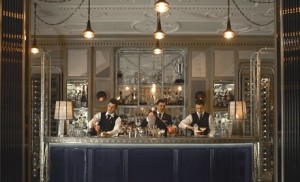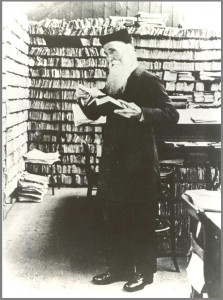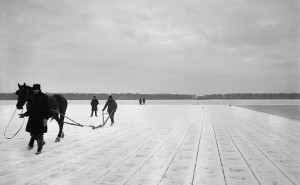Friday Cocktails | Drinking In London, Watching Your Vocabulary and Freezing Your Cubes
Reading Time: 3 minutes.
To begin the weekend: London’s top cocktail bars, a whiskey glossary and a history of ice cubes.

London Calling. The drinks aren’t cheap, but here’s a look from The Guardian at the top 10 classic cocktail bars in London:
London’s cocktail scene is booming, with new bars opening all the time – but if you want to treat yourself to a flawless classic then head to a hotel bar. Cocktail expert Jared Brown chooses the best, plus some cutting edge places where top mixologists are producing drinks destined to become the new classics.

Definitions. From the folks at Saveur, a handy whiskey glossary.

Cutting Much Ice. And, in what may the best tangentially-related article on cocktails, here is Freezer Harvest: A History of Ice Cubes, from Modern Farmer magazine:
While it’s usually challenging to trace the origins of specific cocktails (with all the drinking the details get lost), we understand pretty well how ice got into all of them. It started when one entrepreneur named Frederic Tudor had the idea to harvest lake and pond ice from New England states and sell it in hotter countries. He began sending ships full of ice from Boston to Martinique and Cuba in 1806, expanded the business to Southern US states, and his ice reached as far as India. In the process he created the ice trade.
Up until that point many cocktails were made with added water, but it didn’t take long for the concept of “cooling drinks” with ice to catch on. Different shapes of ice were specified for different drinks: lumps of ice for cocktails, shaved ice for juleps, and cobblestone ice for cobblers. These new drinks were so delicious it seems every foreign visitor to the U.S. in the early 1800s commented on the marvelous cocktails in this country. Soon, “American bars” opened up in big cities around the world serving these refreshing and exotic delicacies. But the glory days of the cocktail in America came to an end in 1920.
The thirteen years of Prohibition pretty much killed the art of bartending in America, and it took decades for things to begin to turn back around. It wasn’t until after 2000 that a critical mass of American bartenders began looking to drink books from Frederic Tudor’s time, and classic cocktails came back into fashion. High-end bars gave better attention to each element in the cocktail, from the base spirit to the type of sugar used in the simple syrup, and eventually to the shape and size of ice best-suited to each drink. The problem was that by then nobody harvested ponds anymore, and machine-made ice provided one size of cube for all types of drinks in most bars.
I’m going home to check the freezer.